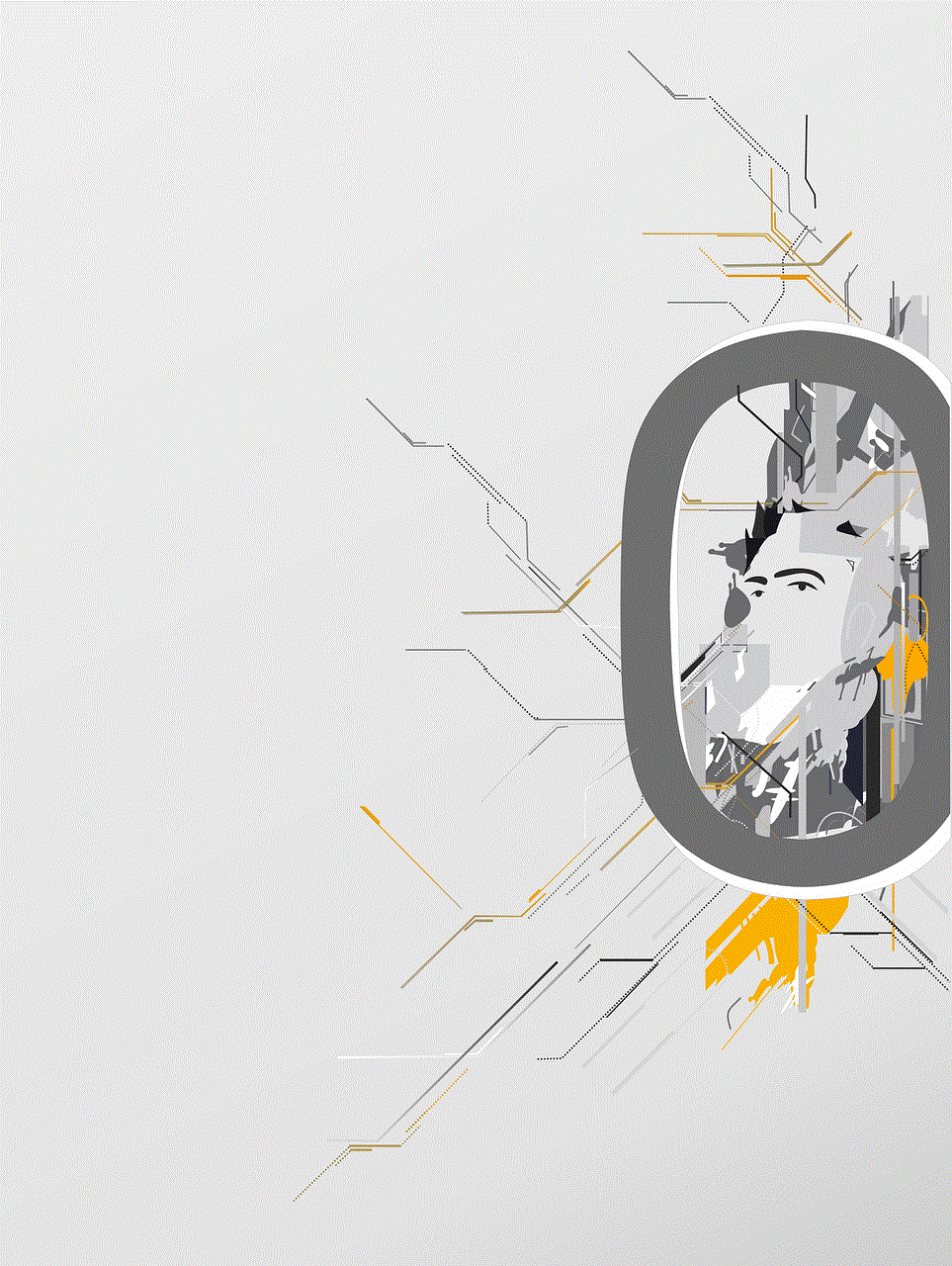ipad screen lock time
The iPad is a popular tablet device manufactured by Apple Inc. It offers a range of features and functionalities that make it a versatile tool for both work and play. One of the important settings on the iPad is the screen lock time, which determines how long the device stays unlocked after it has been idle. In this article, we will explore the screen lock time feature on the iPad in detail, discussing its importance, how to change it, and some tips for optimizing it to suit your needs.
Paragraph 1: Introduction to the iPad screen lock time
The screen lock time on the iPad refers to the duration for which the device stays unlocked after it has been inactive. This setting is essential for maintaining the security and privacy of your iPad. By default, the iPad’s screen lock time is set to two minutes, but you have the flexibility to change it according to your preferences.
Paragraph 2: Importance of screen lock time
The screen lock time is crucial for preventing unauthorized access to your iPad. It ensures that even if you leave your device unattended, no one can use it without your permission. Additionally, it protects your personal data, such as emails, messages, and photos, from being accessed by others.
Paragraph 3: How to change the screen lock time
Changing the screen lock time on your iPad is a straightforward process. To do so, follow these steps:
1. Open the Settings app on your iPad.
2. Tap on “Display & Brightness” or “Touch ID & Passcode” (depending on your iPad model).
3. Scroll down and find the “Auto-Lock” or “Require Passcode” option.
4. Tap on the option and choose your desired screen lock time from the available options (ranging from 30 seconds to 5 minutes).
5. Exit the settings, and your new screen lock time will be in effect.
Paragraph 4: Factors to consider when choosing the screen lock time
When selecting the screen lock time on your iPad, several factors come into play. Some of these factors include the environment in which you use your iPad, your personal preferences, and the level of security you require. Let’s delve deeper into each of these factors.
Paragraph 5: Environment considerations
The environment in which you use your iPad can influence the screen lock time you choose. For instance, if you often use your iPad in public places where there is a risk of theft, setting a shorter screen lock time, such as 30 seconds, would be a wise decision. On the other hand, if you primarily use your iPad at home or in a secure office environment, a longer screen lock time may be more suitable.
Paragraph 6: Personal preference
Personal preference plays a significant role in determining the screen lock time on your iPad. Some individuals may prefer a shorter screen lock time to ensure maximum security, while others may find it inconvenient to unlock their device frequently and opt for a longer screen lock time. Consider your own comfort and convenience when making this decision.
Paragraph 7: Level of security required
The level of security you require is another factor to consider when choosing the screen lock time. If you store sensitive information on your iPad or use it for work-related tasks, it is essential to set a shorter screen lock time to minimize the risk of unauthorized access. Conversely, if your iPad is primarily used for casual activities like browsing the internet or playing games, a longer screen lock time may suffice.
Paragraph 8: Tips for optimizing the screen lock time
To optimize the screen lock time on your iPad, here are some valuable tips:
1. Regularly assess your needs and adjust the screen lock time accordingly.
2. Enable features such as Touch ID or Face ID for quicker unlocking without compromising security.
3. Use a strong passcode to enhance the security of your iPad.
4. Avoid setting an excessively short screen lock time that may lead to frustration and inconvenience.
5. Consider using a shorter screen lock time when traveling or in crowded public areas.
Paragraph 9: Common issues with screen lock time
Sometimes, users may encounter issues with the screen lock time on their iPads. One common problem is the screen lock time resetting to the default setting after software updates. If you notice this issue, simply revisit the settings and adjust the screen lock time according to your preference.
Paragraph 10: Conclusion
In conclusion, the screen lock time on the iPad is a crucial setting that affects the security and convenience of your device. By choosing an appropriate screen lock time, you can strike a balance between protecting your personal data and ensuring a smooth user experience. Evaluate your needs, consider the environment in which you use your iPad, and personalize the screen lock time accordingly. With the right settings in place, you can confidently use your iPad knowing that it is secure and protected.
secret screen recorder snapchat
Snapchat is one of the most popular social media apps used by millions of people all over the world. It allows users to share photos, videos, and messages that disappear after a set amount of time. With its unique features such as filters, lenses, and stories, Snapchat has become a favorite among young adults and teenagers.
However, there is one feature of Snapchat that not many people are aware of – the secret screen recorder. This hidden feature allows users to record their Snapchat conversations and stories without the other person knowing. In this article, we will dive into the world of secret screen recording on Snapchat, how it works, and the implications of using it.
What is the Secret Screen Recorder on Snapchat?
The secret screen recorder on Snapchat is a hidden feature that allows users to record their conversations and stories without the other person knowing. It is not an official feature of the app, and therefore, not many people are aware of its existence. The secret screen recorder is available on both iOS and Android devices, and can be accessed through a third-party app or by using the device’s built-in screen recording feature.
How Does it Work?
To use the secret screen recorder on Snapchat, you will need to have a third-party app or use the built-in screen recording feature on your device. Once you have the app or feature set up, you can open Snapchat and start recording your conversations or stories. The app will record everything that is happening on your screen, including any snaps you open or messages you send.
Implications of Using the Secret Screen Recorder on Snapchat
While the secret screen recorder may seem like a harmless feature, it has some serious implications, especially when used without the other person’s knowledge. Here are some of the potential consequences of using the secret screen recorder on Snapchat:
1. Invasion of Privacy



The most significant concern with the secret screen recorder on Snapchat is the invasion of privacy. When you use this feature to record someone’s snaps or conversations, you are essentially violating their privacy without their knowledge or consent. This can be a serious breach of trust and can damage relationships.
2. Blackmail and Cyberbullying
With the rise of cyberbullying and online harassment, the secret screen recorder on Snapchat can be a tool for bullies and blackmailers. They can use the recorded content to manipulate and blackmail the person, causing them emotional distress and potentially damaging their reputation.
3. Legal Consequences
Recording someone’s snaps or conversations without their knowledge is a violation of their privacy, and it can lead to legal consequences. In some countries, it is considered a criminal offense, and anyone caught doing it may face legal action.
4. Trust Issues
If someone finds out that you have been secretly recording their snaps or conversations, it can lead to trust issues in the relationship. They may feel betrayed and may not trust you in the future, causing strain in the relationship.
5. Snapchat Policies
Using the secret screen recorder on Snapchat goes against the app’s policies. Snapchat states that it is a violation of their terms of service to use any third-party app or device to capture or record snaps without the other person’s knowledge. If found out, your account may be suspended or even permanently deleted.
Alternatives to the Secret Screen Recorder on Snapchat
If you want to save someone’s snaps or conversations on Snapchat, there are other alternatives that are more ethical and legal. Here are some options you can consider:
1. Screenshotting
The most common way of saving someone’s snaps on Snapchat is by taking a screenshot. However, the other person will be notified when you take a screenshot, so it is not a secret way of recording their snaps.
2. Saving Snaps to Memories
Snapchat has a feature called Memories, where you can save your snaps and stories. You can also save other people’s snaps to your Memories, but they will be notified when you do so.



3. Using a Camera
You can also use a camera to record someone’s snaps or conversations on Snapchat. However, this is not a discreet way of recording, and the other person may notice what you are doing.
4. Asking for Permission
The most ethical and legal way of saving someone’s snaps or conversations on Snapchat is by asking for their permission. If they agree, you can save the snaps or record the conversation without any guilt or legal consequences.
Conclusion
The secret screen recorder on Snapchat may seem like a cool feature, but it has serious implications when used without the other person’s knowledge. It is a violation of their privacy and can lead to trust issues, legal consequences, and even cyberbullying. Instead of using this hidden feature, it is better to find alternative ways of saving someone’s snaps or conversations on Snapchat. Remember, always respect someone’s privacy and ask for their permission before recording or saving their snaps.
pokemon go fake gps android
Pokemon Go is a popular augmented reality game that took the world by storm when it was first released in 2016. The game allows players to catch virtual creatures, known as Pokemon, in real-world locations using their mobile devices. However, the game has also given rise to a phenomenon known as “fake GPS”, where players use third-party apps to spoof their location and gain an unfair advantage in the game. In this article, we will explore the concept of “Pokemon Go fake GPS” on Android devices and its impact on the game and its players.
The use of fake GPS in Pokemon Go is not a new concept. It has been around since the game’s launch and has been a topic of controversy among players and developers. So what exactly is fake GPS and how does it work? Fake GPS is the use of third-party apps or software to change the location data sent by your device to the game’s servers. This allows players to appear as if they are in a different location than they actually are, giving them the ability to catch Pokemon that may not be available in their current location.
The most common reason why players use fake GPS in Pokemon Go is to catch region-specific Pokemon that are not available in their area. For example, players in Europe may want to catch the popular Mr. Mime, which is only available in that region. By using fake GPS, they can make it seem like they are in Europe and catch the Pokemon without having to travel there physically. This gives them an unfair advantage over players who are playing the game legitimately.
Another reason why players use fake GPS is to gain an advantage in the game’s competitive aspect. In Pokemon Go, players can battle against each other in gym battles, where they can earn rewards and prestige. By using fake GPS, players can easily travel to different locations and battle in gyms that are not in their vicinity. This allows them to dominate the gym scene and gain rewards without actually having to put in the effort of physically traveling to those locations.
The use of fake GPS in Pokemon Go has also led to the creation of “spoofing communities” where players can share tips and tricks on how to effectively use fake GPS in the game. These communities have become a breeding ground for players who want to cheat their way through the game. They share information on the best fake GPS apps to use, how to avoid getting caught by the game’s developers, and even sell services that allow players to catch rare Pokemon for a fee.
While the use of fake GPS may seem harmless to some, it has a significant impact on the game and its players. For one, it undermines the game’s core concept of exploring the real world and catching Pokemon in different locations. It also creates an unfair advantage for those who use it, making it difficult for legitimate players to compete. This has led to frustration and resentment among players, causing a rift in the game’s community.
Moreover, the use of fake GPS in Pokemon Go has also resulted in numerous issues for the game’s developers, Niantic . The company has taken measures to combat the use of fake GPS, including issuing permanent bans to players caught using it. However, with the constant evolution of fake GPS technology, it has become challenging for Niantic to keep up and prevent players from cheating. This has resulted in a never-ending battle between the developers and the cheating players.
Despite the efforts of Niantic, fake GPS remains a prevalent issue in Pokemon Go, especially on Android devices. This is because Android devices are more susceptible to fake GPS than iOS devices, due to the open-source nature of the operating system. This allows third-party developers to create apps that can easily spoof location data on Android devices, making it easier for players to cheat in the game.
In response to this, Niantic has implemented several measures to prevent the use of fake GPS in the game. One of these measures is the inclusion of a “safety net” in the game’s code, which detects fake GPS apps and prevents them from working with Pokemon Go. However, this has also caused inconvenience to legitimate players who may have these apps installed for other purposes. There have been numerous reports of players getting banned even though they were not using fake GPS for Pokemon Go.



Another measure taken by Niantic is the implementation of a “soft ban” system, where players caught using fake GPS are temporarily banned from the game. This means that they cannot interact with PokeStops, catch Pokemon, or battle in gyms for a certain amount of time. While this may seem like a lenient punishment, it has caused frustration among legitimate players who may have encountered a soft ban due to a technical issue or a glitch in the game.
In conclusion, the use of fake GPS in Pokemon Go on Android devices is a prevalent issue that has caused numerous problems for the game and its community. While it may seem like a harmless way for players to catch rare Pokemon or gain an advantage in the game, it has created an unfair playing field and has led to frustration and resentment among legitimate players. Niantic continues to combat the use of fake GPS, but it remains a constant battle for them. As long as there is a demand for it, the use of fake GPS in Pokemon Go will continue to be a problem that plagues the game.